Did you know? |
What do you have to look for to choose the right oscilloscope for your application? Read more...
Latest Oscilloscope News |
100MHz Battery-Portable Oscilloscopes
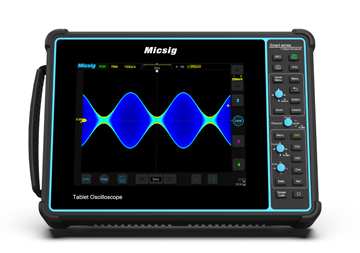 23 June 2022 - Saelig Company introduced the Micsig STO1004 four-channel battery-powered portable oscilloscope, which offers 100MHz bandwidth, 70Mpts memory, 1GSa/s sampling (single channel), 130,000wfm/s refresh rate, and a 7.5Ah Li battery for extended field use. Improvements over previous Micsig models include an intelligent bidirectional Universal Probe Interface for accommodating and powering smart probes such as those with differential inputs and new joystick control buttons. A smartphone app is also available for remote instrument control.
23 June 2022 - Saelig Company introduced the Micsig STO1004 four-channel battery-powered portable oscilloscope, which offers 100MHz bandwidth, 70Mpts memory, 1GSa/s sampling (single channel), 130,000wfm/s refresh rate, and a 7.5Ah Li battery for extended field use. Improvements over previous Micsig models include an intelligent bidirectional Universal Probe Interface for accommodating and powering smart probes such as those with differential inputs and new joystick control buttons. A smartphone app is also available for remote instrument control.
Isolated Channel PC Oscilloscope
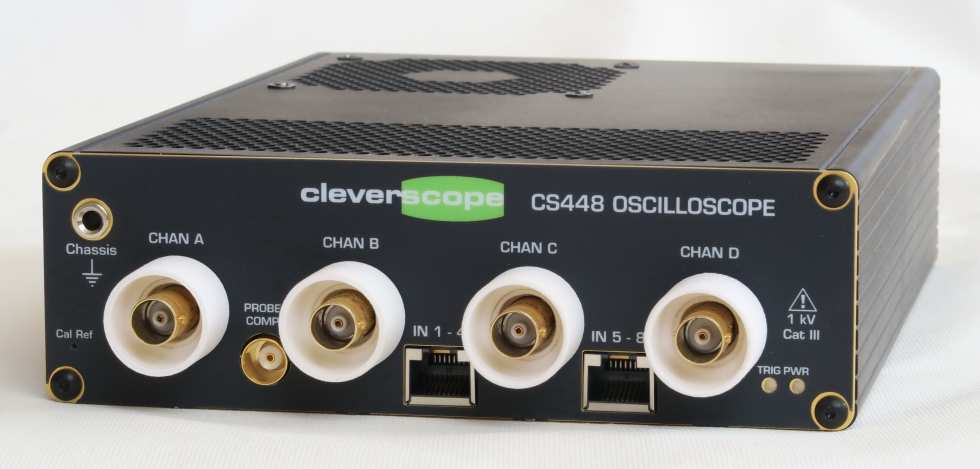 17 June 2022 - Cleverscope introduced the CS548, a 2kV DC isolated channel oscilloscope designed to be useful anywhere isolation and high CMRR are needed - in particular power electronics, including on the high side. Using the CS1200 IsoPod allows a >30kV isolation. The new CS548 features 100 dB CMRR at 50 MHz, Frequency Response Analysis, Component LCR measurement, MSPS streaming to disk for days, high resolution spectra, sophisticated maths, Matlab and Excel live, external sampling clock, Ethernet or USB, Isolated Signal Generator, and mixed signal capture.
17 June 2022 - Cleverscope introduced the CS548, a 2kV DC isolated channel oscilloscope designed to be useful anywhere isolation and high CMRR are needed - in particular power electronics, including on the high side. Using the CS1200 IsoPod allows a >30kV isolation. The new CS548 features 100 dB CMRR at 50 MHz, Frequency Response Analysis, Component LCR measurement, MSPS streaming to disk for days, high resolution spectra, sophisticated maths, Matlab and Excel live, external sampling clock, Ethernet or USB, Isolated Signal Generator, and mixed signal capture.
10 kV High-Voltage Oscilloscope Probe
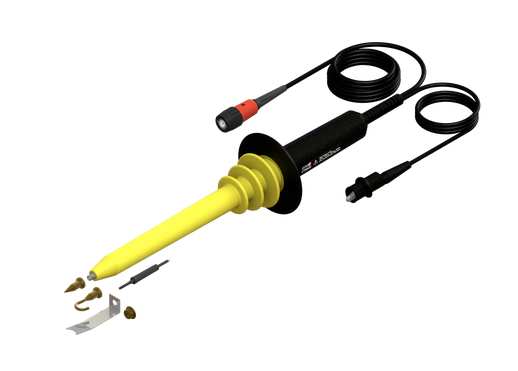 15 June 2022 - Cal Test Electronics introduced the CT4432 High-Voltage Oscilloscope Probe. The CT4432 has a 10 kV maximum voltage input rating and is cTUVus listed. The CT4432 High-Voltage Oscilloscope Probe enables the user to safely measure voltage levels up to 10 kV. With the Cal Test Electronics name and certification by cTUVus, the user can be confident this test accessory is both reliable and safe. The CT4432 is covered by a two-year warranty.
15 June 2022 - Cal Test Electronics introduced the CT4432 High-Voltage Oscilloscope Probe. The CT4432 has a 10 kV maximum voltage input rating and is cTUVus listed. The CT4432 High-Voltage Oscilloscope Probe enables the user to safely measure voltage levels up to 10 kV. With the Cal Test Electronics name and certification by cTUVus, the user can be confident this test accessory is both reliable and safe. The CT4432 is covered by a two-year warranty.
SIGLENT launched its first Oscilloscopes with 12-bit vertical Resolution
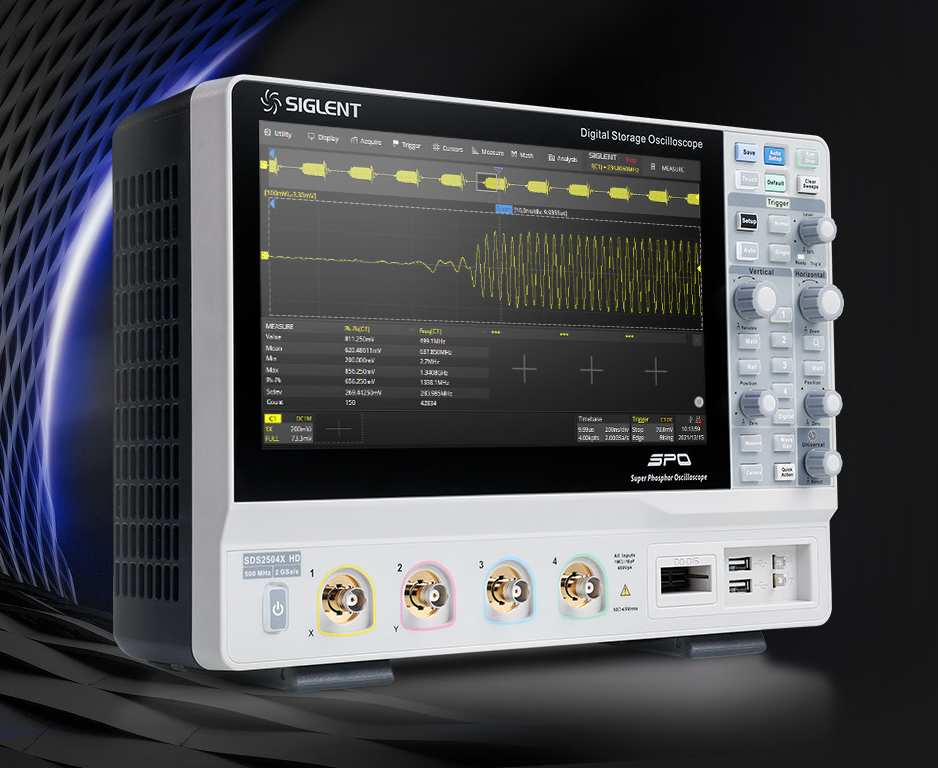 13 June 2022 - SIGLENT Technologies has introduced a new 12-bit oscilloscope series. Compared to 8-bit ADCs, 12-bit systems have 16x higher vertical resolution which provides significantly lower quantization error. This improvement in resolution is valuable when analyzing the smallest signal details, and is especially useful when the zoom function is used. The analog-to-digital converters have a maximum sampling rate of 2 GS/s and all models in the series come with 4 analog input channels. All oscilloscopes are equipped with two AD converters and 2 x 200 Mpt acquisition memory. With four activated channels, this results in a minimum sampling rate of 1GS/s and a memory depth of 100 MPkt at each channel.
13 June 2022 - SIGLENT Technologies has introduced a new 12-bit oscilloscope series. Compared to 8-bit ADCs, 12-bit systems have 16x higher vertical resolution which provides significantly lower quantization error. This improvement in resolution is valuable when analyzing the smallest signal details, and is especially useful when the zoom function is used. The analog-to-digital converters have a maximum sampling rate of 2 GS/s and all models in the series come with 4 analog input channels. All oscilloscopes are equipped with two AD converters and 2 x 200 Mpt acquisition memory. With four activated channels, this results in a minimum sampling rate of 1GS/s and a memory depth of 100 MPkt at each channel.
Rohde & Schwarz enhances its R&S RTP High-Performance Oscilloscope
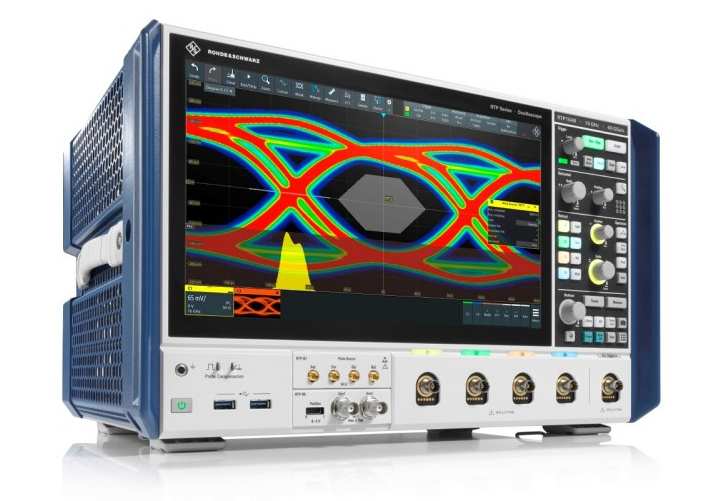 10 June 2022 - Rohde & Schwarz introduced the new generation of R&S RTP high-performance oscilloscopes, which combine high-class signal integrity measurements with the fastest possible acquisition for real-time analysis. The new models come with a bigger and brighter 13.3” full HD touchscreen and a fully redesigned front panel. Users can take advantage of the crisp 16:9 screen format, which displays waveforms while allowing settings to be altered and changed quickly. The intuitive front panel increases productivity with fast, direct access to primary instrument settings.
10 June 2022 - Rohde & Schwarz introduced the new generation of R&S RTP high-performance oscilloscopes, which combine high-class signal integrity measurements with the fastest possible acquisition for real-time analysis. The new models come with a bigger and brighter 13.3” full HD touchscreen and a fully redesigned front panel. Users can take advantage of the crisp 16:9 screen format, which displays waveforms while allowing settings to be altered and changed quickly. The intuitive front panel increases productivity with fast, direct access to primary instrument settings.
Tektronix launched 2 Series Mixed Signal Oscilloscopes
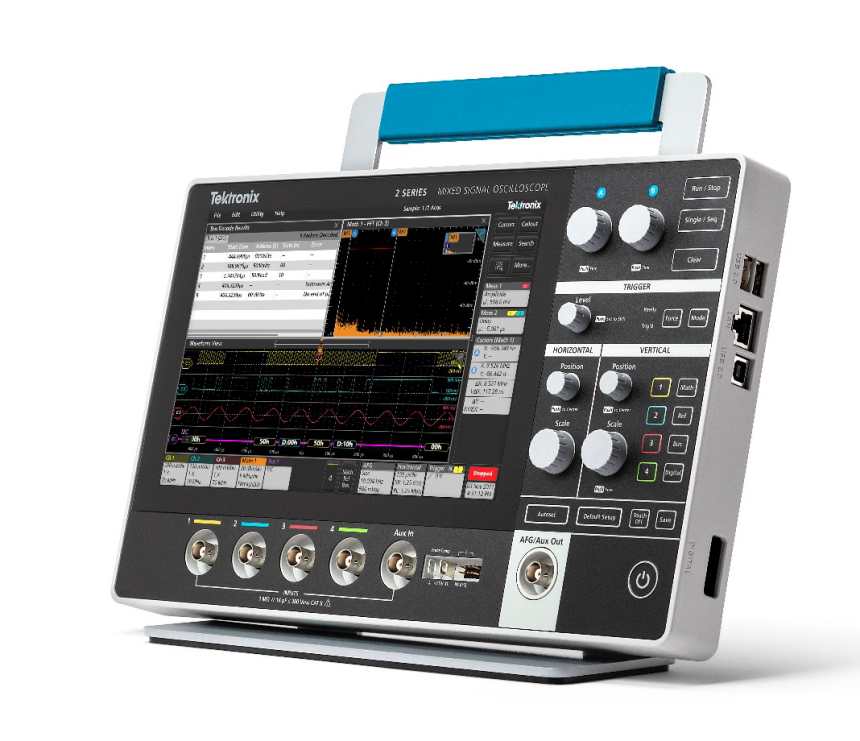 08 June 2022 - Tektronix unveiled the 2 Series Mixed Signal Oscilloscope (MSO). The new 2 Series MSO can go seamlessly from the bench to the field and back, enabling workflows previously unimagined on a scope. It is the first portable oscilloscope to offer benchtop performance and the award-winning Tektronix user interface. Weighing less than 1.8kgs and 38mm thin, the 2 Series MSO can fit into a small backpack, delivering unmatched performance and portability.
08 June 2022 - Tektronix unveiled the 2 Series Mixed Signal Oscilloscope (MSO). The new 2 Series MSO can go seamlessly from the bench to the field and back, enabling workflows previously unimagined on a scope. It is the first portable oscilloscope to offer benchtop performance and the award-winning Tektronix user interface. Weighing less than 1.8kgs and 38mm thin, the 2 Series MSO can fit into a small backpack, delivering unmatched performance and portability.
Simplified System Integration Debugging with USB Type-C Test Coupon Fixtures
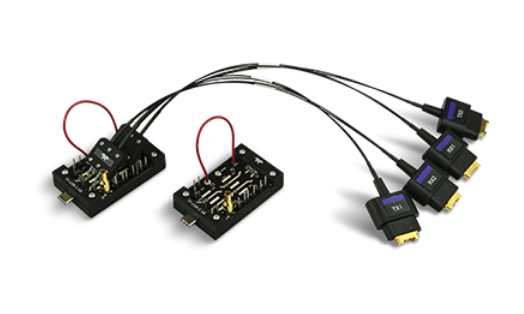 07 June 2022 – Teledyne LeCroy announced USB Type-C High-speed and Sideband Test Coupon Fixtures that provide the industry’s first oscilloscope solution for high-speed probing and analysis of an active data link at the USB Type-C connector. Additional connection to a Teledyne LeCroy protocol analyzer provides complete debug capability of any USB Type-C link negotiation failure.
07 June 2022 – Teledyne LeCroy announced USB Type-C High-speed and Sideband Test Coupon Fixtures that provide the industry’s first oscilloscope solution for high-speed probing and analysis of an active data link at the USB Type-C connector. Additional connection to a Teledyne LeCroy protocol analyzer provides complete debug capability of any USB Type-C link negotiation failure.
Oscilloscope Basics |
Oscilloscope Probes – Vital Link in the Measurement Chain
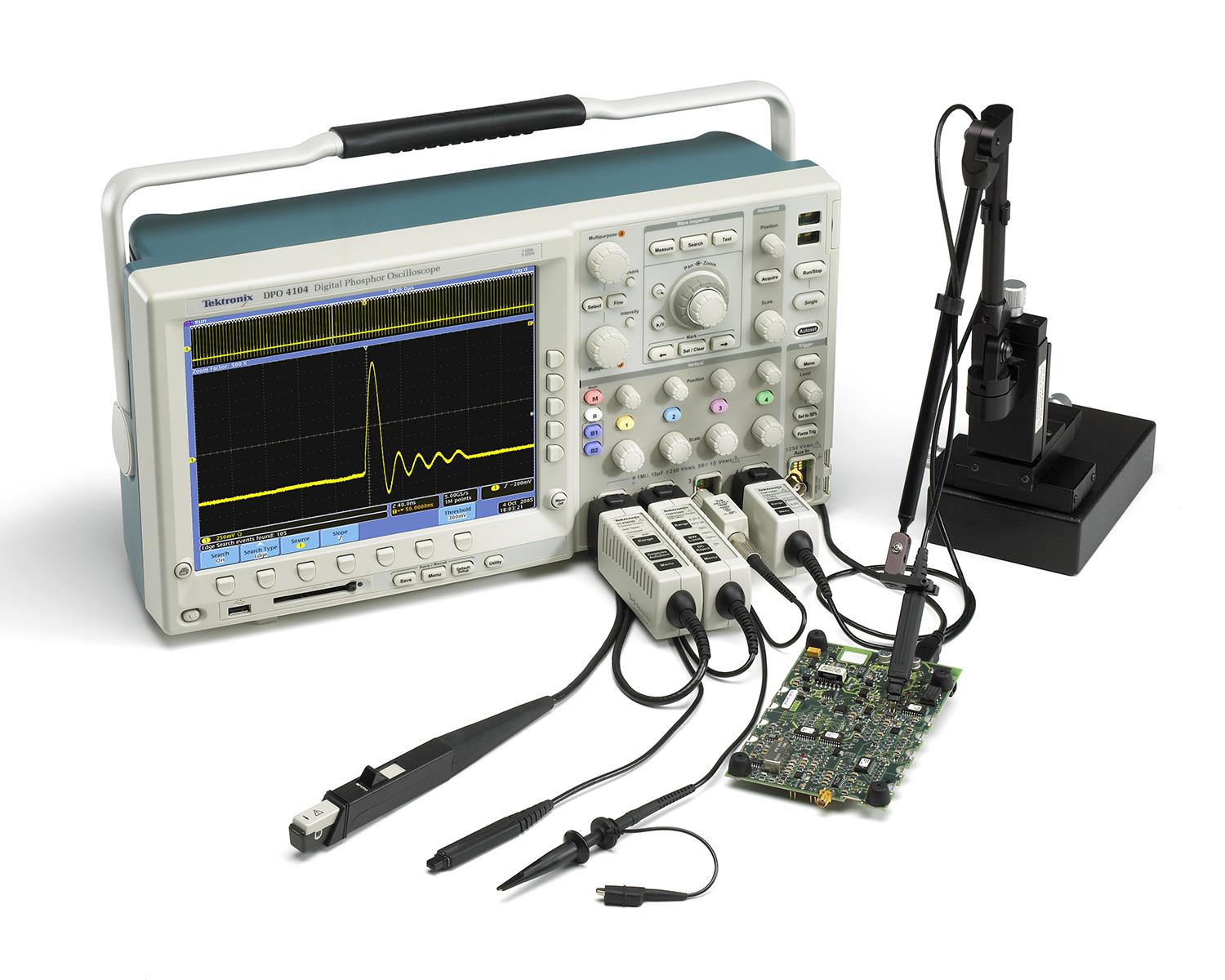
Oscilloscope Background |
Oscilloscope History and Milestones
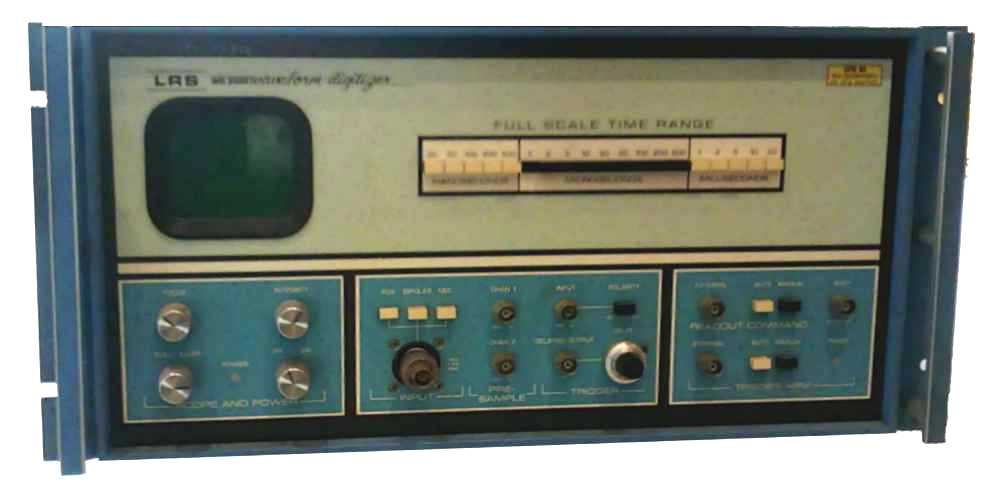 Oscilloscopes have been invented in the 1920s. Up to now this instrument encountered many innovations. In the beginning the most important manufacturers have been General Radio, DuMont, General Electric and Radio Corporation of America. Later Cossor and later Solartron dominated the market. Today the main players are Keysight, Tektronix and Teledyne LeCroy. Below we listed some important oscilloscope milestones.
Oscilloscopes have been invented in the 1920s. Up to now this instrument encountered many innovations. In the beginning the most important manufacturers have been General Radio, DuMont, General Electric and Radio Corporation of America. Later Cossor and later Solartron dominated the market. Today the main players are Keysight, Tektronix and Teledyne LeCroy. Below we listed some important oscilloscope milestones.

 How to resolve AdBlock issue?
How to resolve AdBlock issue?